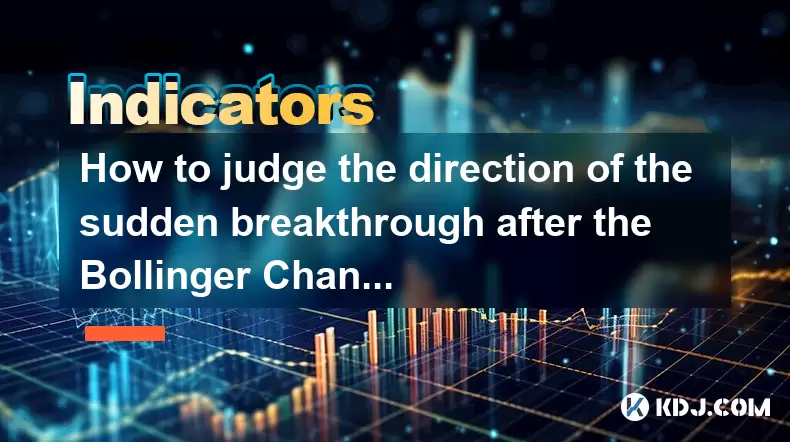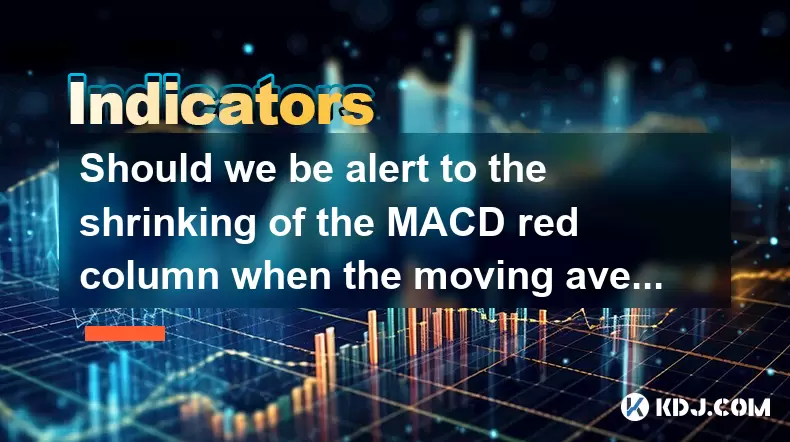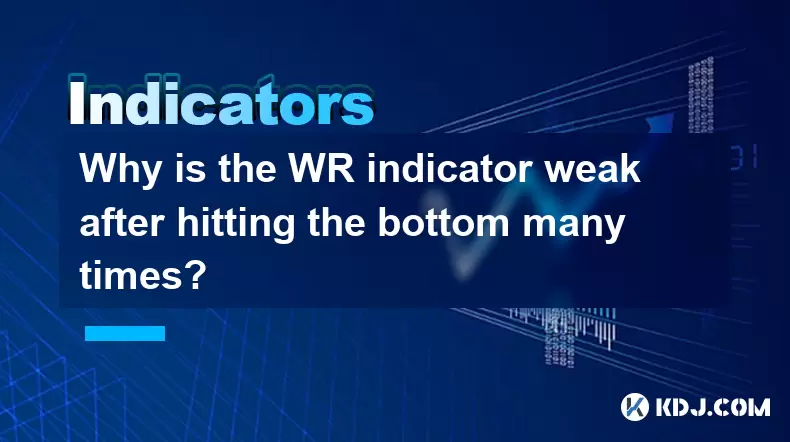-
 Bitcoin
Bitcoin $101,898.5005
-0.75% -
 Ethereum
Ethereum $2,258.1125
-1.07% -
 Tether USDt
Tether USDt $1.0004
0.01% -
 XRP
XRP $2.0178
-2.93% -
 BNB
BNB $624.0243
-1.53% -
 Solana
Solana $134.3298
-0.90% -
 USDC
USDC $0.9999
0.01% -
 TRON
TRON $0.2675
-2.05% -
 Dogecoin
Dogecoin $0.1538
-1.96% -
 Cardano
Cardano $0.5482
-1.11% -
 Hyperliquid
Hyperliquid $35.5636
5.45% -
 Bitcoin Cash
Bitcoin Cash $453.4902
-1.66% -
 Sui
Sui $2.5134
-2.97% -
 UNUS SED LEO
UNUS SED LEO $9.1292
1.77% -
 Chainlink
Chainlink $11.8457
-1.60% -
 Stellar
Stellar $0.2312
-2.73% -
 Avalanche
Avalanche $16.9721
0.29% -
 Toncoin
Toncoin $2.7549
-3.82% -
 Shiba Inu
Shiba Inu $0.0...01081
-1.10% -
 Litecoin
Litecoin $80.8250
-0.71% -
 Hedera
Hedera $0.1374
0.21% -
 Monero
Monero $305.4827
-2.36% -
 Ethena USDe
Ethena USDe $1.0006
0.00% -
 Dai
Dai $1.0000
-0.01% -
 Polkadot
Polkadot $3.2085
-3.12% -
 Bitget Token
Bitget Token $4.0845
-3.13% -
 Uniswap
Uniswap $6.3353
-1.63% -
 Pi
Pi $0.5085
-0.70% -
 Pepe
Pepe $0.0...08913
-3.82% -
 Aave
Aave $232.7090
-0.58%
How to combine MACD and Bollinger Bands? Is the MACD signal more accurate when the Bollinger Bands narrow?
Combining MACD and Bollinger Bands can enhance crypto trading by confirming trends and breakouts, especially when bands narrow, signaling potential moves.
May 23, 2025 at 02:42 am

The integration of MACD (Moving Average Convergence Divergence) and Bollinger Bands can provide traders with a powerful tool for analyzing market trends and potential entry and exit points within the cryptocurrency market. In this article, we will delve into how these two indicators can be combined effectively, and whether the accuracy of MACD signals increases when Bollinger Bands narrow.
Understanding MACD and Bollinger Bands
MACD is a trend-following momentum indicator that shows the relationship between two moving averages of a security's price. It consists of the MACD line, the signal line, and the histogram. Traders typically look for crossovers between the MACD line and the signal line, as well as divergences between the MACD and the price action, to generate buy or sell signals.
Bollinger Bands, on the other hand, are a volatility indicator developed by John Bollinger. They consist of a middle band being a simple moving average (SMA), typically set at 20 periods, and two outer bands that are standard deviations away from the middle band. The distance between the upper and lower bands reflects the volatility of the market; the narrower the bands, the lower the volatility, and vice versa.
Combining MACD and Bollinger Bands
To effectively combine these two indicators, traders should understand how each can complement the other. Here’s how you can do it:
Identify the Trend with MACD: Use the MACD to identify the overall trend of the cryptocurrency. A bullish trend is indicated when the MACD line crosses above the signal line, and a bearish trend when it crosses below.
Assess Volatility with Bollinger Bands: Use the Bollinger Bands to gauge the market's volatility. Narrow bands suggest low volatility, while wide bands indicate high volatility.
Look for Squeeze and Breakout: A Bollinger Band squeeze (when the bands come very close together) often precedes a significant price move. When you see a squeeze, look at the MACD for confirmation of the direction of the impending move.
Confirm Signals: Use the MACD to confirm signals generated by the Bollinger Bands. For example, if the price breaks out above the upper Bollinger Band, look for the MACD line to cross above the signal line to confirm a bullish breakout.
Is the MACD Signal More Accurate When the Bollinger Bands Narrow?
The accuracy of MACD signals when the Bollinger Bands narrow is a nuanced topic. When the Bollinger Bands narrow, it indicates a period of low volatility, which often precedes a significant price move. This can potentially enhance the reliability of MACD signals because:
Reduced Noise: Narrow Bollinger Bands suggest a consolidation phase, which means there is less market noise. This can make the MACD signals clearer and potentially more reliable.
Anticipation of Breakout: A narrowing of the Bollinger Bands often signals an impending breakout. If the MACD line crosses above or below the signal line during this time, it can be a strong indicator of the direction of the breakout.
Confirmation of Trend: When the Bollinger Bands are narrow and the MACD confirms a trend with a crossover, it can provide a more robust signal than if the bands were wide and the market was more volatile.
However, it's important to note that no indicator is infallible. The accuracy of MACD signals during periods of narrow Bollinger Bands can still be affected by other market factors, such as news events or sudden shifts in market sentiment.
Practical Application in Cryptocurrency Trading
To apply these concepts in the context of cryptocurrency trading, consider the following steps:
Set Up Your Chart: Open your trading platform and set up a chart for the cryptocurrency you are interested in. Ensure that you have both the MACD and Bollinger Bands indicators added to your chart.
Analyze the Trend: Look at the MACD to determine the current trend. If the MACD line is above the signal line, the trend is bullish; if below, it is bearish.
Monitor Volatility: Observe the Bollinger Bands. If they are narrowing, it suggests a period of low volatility, which could precede a significant move.
Watch for Squeeze and Breakout: Keep an eye out for a Bollinger Band squeeze. When you see the bands coming together, be prepared for a potential breakout.
Confirm with MACD: Once a breakout occurs, confirm the direction with the MACD. If the price breaks above the upper Bollinger Band, look for the MACD line to cross above the signal line. If it breaks below the lower Bollinger Band, look for the MACD line to cross below the signal line.
Execute Trades: Based on the confirmed signals, execute your trades. For example, if you see a bullish breakout confirmed by the MACD, consider entering a long position.
Case Study: Bitcoin (BTC) Analysis
Let's consider a hypothetical scenario with Bitcoin (BTC) to illustrate how these indicators can be used together.
Initial Observation: You notice that the Bollinger Bands on the BTC chart are starting to narrow, indicating a period of low volatility.
MACD Analysis: You check the MACD and see that the MACD line is below the signal line, indicating a bearish trend.
Squeeze and Breakout: Over the next few days, the Bollinger Bands continue to narrow until they reach a point of significant squeeze. Suddenly, the price of BTC breaks below the lower Bollinger Band.
Confirmation: You look at the MACD and see that the MACD line has crossed below the signal line, confirming the bearish breakout.
Trade Execution: Based on this confirmed bearish signal, you decide to enter a short position on BTC.
Risks and Considerations
While combining MACD and Bollinger Bands can be a powerful strategy, it's crucial to be aware of the risks and considerations:
False Signals: Even with confirmation from both indicators, there can still be false signals. Always use stop-loss orders to manage risk.
Market Conditions: Different market conditions can affect the reliability of these indicators. For instance, in a highly volatile market, the Bollinger Bands might remain wide, making it harder to interpret the MACD signals accurately.
Time Frame: The effectiveness of these indicators can vary depending on the time frame you are using. Shorter time frames may generate more signals but with higher risk, while longer time frames may provide more reliable signals but with fewer trading opportunities.
Frequently Asked Questions
Q: Can I use MACD and Bollinger Bands for any cryptocurrency?
A: Yes, you can use MACD and Bollinger Bands for any cryptocurrency. However, the effectiveness of these indicators can vary depending on the liquidity and volatility of the specific cryptocurrency you are trading.
Q: How do I adjust the settings of MACD and Bollinger Bands for different cryptocurrencies?
A: The default settings for MACD are typically 12, 26, and 9 for the fast, slow, and signal lines, respectively. For Bollinger Bands, the default is usually a 20-period SMA with two standard deviations. You can experiment with different settings to find what works best for the specific cryptocurrency you are trading. For highly volatile cryptocurrencies, you might want to increase the number of periods for the Bollinger Bands to smooth out the volatility.
Q: What other indicators can I use in conjunction with MACD and Bollinger Bands?
A: Other indicators that can complement MACD and Bollinger Bands include the Relative Strength Index (RSI) for overbought/oversold conditions, the Stochastic Oscillator for momentum, and the Average True Range (ATR) for volatility. Combining multiple indicators can help confirm signals and improve the accuracy of your trading decisions.
Q: How often should I check the MACD and Bollinger Bands on my charts?
A: The frequency of checking your charts depends on your trading strategy and time frame. For day traders, checking the charts every few minutes to an hour might be necessary. For swing traders, checking the charts once or twice a day might be sufficient. Always ensure that you are not overtrading, as this can lead to increased risk and potential losses.
Disclaimer:info@kdj.com
The information provided is not trading advice. kdj.com does not assume any responsibility for any investments made based on the information provided in this article. Cryptocurrencies are highly volatile and it is highly recommended that you invest with caution after thorough research!
If you believe that the content used on this website infringes your copyright, please contact us immediately (info@kdj.com) and we will delete it promptly.
- Cryptocurrencies, Coingecko, and Trending Tokens: What's Hot Now?
- 2025-06-23 23:05:12
- FUNToken: Decoding Past Trends and Getting Started in the Gaming Crypto Sphere
- 2025-06-23 22:25:12
- BTC Price Analysis: Navigating Volatility and the Quest for a New ATH
- 2025-06-23 22:25:12
- Genesis, Bitcoin Mining, and Air-Cooled Miners: A New Era?
- 2025-06-23 22:45:12
- Coinbase's Growth and Resilience: Navigating the Crypto Landscape
- 2025-06-23 22:45:12
- Bitcoin Options Market: Bullish Bets Amidst Geopolitical Jitters
- 2025-06-23 22:51:52
Related knowledge

What is the significance of the gap formed by the gap opening not being filled within five days?
Jun 23,2025 at 09:42pm
Understanding Gaps in Cryptocurrency TradingIn the world of cryptocurrency trading, a gap refers to a situation where the price of an asset jumps from one level to another without any trading activity occurring between those two levels. This often happens over weekends or holidays when the market is closed, and significant news or events occur that impa...

Does the second golden cross of MACD above the zero axis represent the continuation of strength?
Jun 23,2025 at 08:21pm
Understanding the MACD IndicatorThe Moving Average Convergence Divergence (MACD) is a widely used technical analysis tool in cryptocurrency trading. It consists of three main components: the MACD line, the signal line, and the histogram. The MACD line is calculated by subtracting the 26-period Exponential Moving Average (EMA) from the 12-period EMA. The...

How to judge the direction of the sudden breakthrough after the Bollinger Channel narrows to the extreme?
Jun 23,2025 at 11:00pm
Understanding the Bollinger Channel and Its Narrowing PatternThe Bollinger Channel is a widely used technical indicator in cryptocurrency trading, consisting of three bands: the middle band (a simple moving average), and two outer bands that represent standard deviations from the middle line. When the price consolidates for an extended period, the chann...

Is it effective when the DIF line suddenly crosses the zero axis when the volume is shrinking and the market is trading sideways?
Jun 23,2025 at 07:29pm
Understanding the DIF Line in Technical AnalysisThe DIF line, or the Difference Line, is a critical component of the MACD (Moving Average Convergence Divergence) indicator, widely used in technical analysis across cryptocurrency and traditional financial markets. It represents the difference between the 12-period EMA (Exponential Moving Average) and the...

Should we be alert to the shrinking of the MACD red column when the moving average is arranged in a bullish pattern?
Jun 23,2025 at 08:14pm
Understanding the MACD Red Column and Its SignificanceThe Moving Average Convergence Divergence (MACD) is a widely used technical indicator in cryptocurrency trading. It consists of three main components: the MACD line, the signal line, and the MACD histogram (the red column). The red column represents the difference between the MACD line and the signal...

Why is the WR indicator weak after hitting the bottom many times?
Jun 23,2025 at 07:56pm
Understanding the WR Indicator in Cryptocurrency TradingThe Williams %R (WR) indicator is a momentum oscillator used by traders to identify overbought and oversold levels in the market. It ranges from 0 to -100, with readings above -20 considered overbought and below -80 considered oversold. In the context of cryptocurrency trading, where volatility is ...

What is the significance of the gap formed by the gap opening not being filled within five days?
Jun 23,2025 at 09:42pm
Understanding Gaps in Cryptocurrency TradingIn the world of cryptocurrency trading, a gap refers to a situation where the price of an asset jumps from one level to another without any trading activity occurring between those two levels. This often happens over weekends or holidays when the market is closed, and significant news or events occur that impa...

Does the second golden cross of MACD above the zero axis represent the continuation of strength?
Jun 23,2025 at 08:21pm
Understanding the MACD IndicatorThe Moving Average Convergence Divergence (MACD) is a widely used technical analysis tool in cryptocurrency trading. It consists of three main components: the MACD line, the signal line, and the histogram. The MACD line is calculated by subtracting the 26-period Exponential Moving Average (EMA) from the 12-period EMA. The...

How to judge the direction of the sudden breakthrough after the Bollinger Channel narrows to the extreme?
Jun 23,2025 at 11:00pm
Understanding the Bollinger Channel and Its Narrowing PatternThe Bollinger Channel is a widely used technical indicator in cryptocurrency trading, consisting of three bands: the middle band (a simple moving average), and two outer bands that represent standard deviations from the middle line. When the price consolidates for an extended period, the chann...

Is it effective when the DIF line suddenly crosses the zero axis when the volume is shrinking and the market is trading sideways?
Jun 23,2025 at 07:29pm
Understanding the DIF Line in Technical AnalysisThe DIF line, or the Difference Line, is a critical component of the MACD (Moving Average Convergence Divergence) indicator, widely used in technical analysis across cryptocurrency and traditional financial markets. It represents the difference between the 12-period EMA (Exponential Moving Average) and the...

Should we be alert to the shrinking of the MACD red column when the moving average is arranged in a bullish pattern?
Jun 23,2025 at 08:14pm
Understanding the MACD Red Column and Its SignificanceThe Moving Average Convergence Divergence (MACD) is a widely used technical indicator in cryptocurrency trading. It consists of three main components: the MACD line, the signal line, and the MACD histogram (the red column). The red column represents the difference between the MACD line and the signal...

Why is the WR indicator weak after hitting the bottom many times?
Jun 23,2025 at 07:56pm
Understanding the WR Indicator in Cryptocurrency TradingThe Williams %R (WR) indicator is a momentum oscillator used by traders to identify overbought and oversold levels in the market. It ranges from 0 to -100, with readings above -20 considered overbought and below -80 considered oversold. In the context of cryptocurrency trading, where volatility is ...
See all articles
























































































